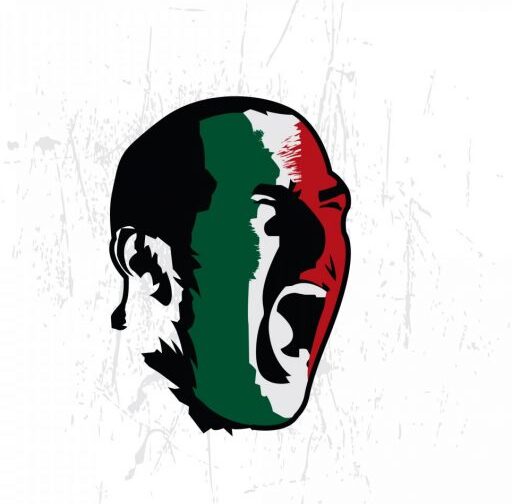The Scudetto might be beyond the reach of both Milanese sides, but the 170th Serie A Derby Della Madonnina is sure to be as fiercely contested as ever.
Inter will play the role of ‘visitors’ at the Stadio San Siro safe in the knowledge that even defeat will see them hold the edge over their rivals, the Nerazzurri having emerged triumphant 63 times to Milan’s comparatively meagre 51 victories.
Numbers and statistics tell only a part of the story, however; there are a whole host of interesting facts about the previous meetings between the two sides, and their rivalry.
The gift and the curse of a derby winner
Max Laich, who scored the winning goal in the first competitive meeting between Inter and Milan, failed to find the net for the rest of his playing career.
The Swiss was a professional chemist, who played a handful of games for the Rossoneri, scoring his only goal in the 3-2 win over the Nerazzurri in January 1909. He suffered an injury in another derby game, after a missed kick took his leg into an Inter player; breaking his tibia in several places.
That, coming just ten minutes into the May contest, saw his playing career brought to a halt – the problem being so severe that the game itself was abandoned. Laich was not done with football altogether, as he picked up a whistle when he hung up his boots and became a referee instead.

Homes from home
While the overwhelming majority of derby games have taken place at the Stadio Giuseppe Meazza, or its previous nomenclature, Milan and Inter have met in other locations, too. The Nerazzurri did not begin playing their home games there until 1947, so they hosted their rivals at previous bases Campo Goldoni and Arena Civica before that time.
Indeed, the Rossoneri ground-shared again at the latter while the stadium was being built at San Siro, before they took up their new residence in 1926.
Two derbies have been hosted on ‘neutral’ terrain during history. The first, the 1977 Coppa Italia Final saw Milan defeat Inter 2-0, coincidentally, at the Stadio Giuseppe Meazza. The second, much more recently, was the Supercoppa Italiana of 2011 when again the Rossoneri triumphed, this time 2-1, in the Bird’s Nest Stadium in Beijing.
It goes the distance
Of the last six derbies, four have seen decisive goals in the 90th minute or later, so don’t leave your seat early.
In 2017, Inter rallied late to grab a second equaliser in a 2-2 draw with a 92nd minute Ivan Perisic strike, tapping home a Jeison Murillo header at the far post. The next meeting was even more dramatic. Alessio Romagnoli had stabbed what looked to be an 82nd minute consolation strike, meaning Milan trailed 2-1 deep into injury time. With all 11 men forward for a 97th minute corner, the ball worked its way across to Christian Zapata, who contorted himself to hook it just over the goal line to secure another 2-2 and send the away fans into raptures.
A couple of months later, Patrick Cutrone grabbed an extra-time winner in a Coppa Italia tie and while two of the last three derbies have been 0-0, the one goal that was scored in that trio was a 92nd minute Mauro Icardi decider.

Andriy the great
With 14 goals, Andriy Shevchenko is the leading goalscorer in Derby Della Madonnina history. His penalty in the Rossoneri’s 2005 defeat took him above Giuseppe Meazza on the all-time list, while Gunnar Nordahl and Istvan Nyers complete the top five.
Meazza 13 goals were split by a margin of 12 to one in favour of Inter, and his association with the Nerazzurri remains strong – so much so that Milan’s official club website still refer to the stadium that now bears his name as the San Siro.
Of the current crop, Mauro Icardi has six derby goals, including a hat-trick, while Milan’s highest current tally is Suso’s three.
Differences run deep
While both sides have reason to consider themselves amongst the Italian elite today, their respective foundations were very different indeed. Reflecting the heritage of Englishman Herbert Kilpin who was integral in their creation, Milan bear the Anglicised version of their home city’s name and for the initial period of existence restricted non-Italians places in the team.
Splitting away from this idea, Internazionale welcomed those from overseas with open arms, a tradition that has been retained throughout their history; it is rare that the Rossoneri field fewer Italian players than Inter in a derby, and is almost certain not to be the case this time around.
This division of players led to a division in support, too, which saw Inter favoured by the better-heeled members of Milanese society in their early years, while the Rossoneri were the club of the working class of the city. Such divides are practically melted away now, with the two sides dividing households, streets and even families. It is a rivalry that has endured for more than 100 years and whether there is silverware up for grabs or not, the Derby della Madonnina matters, and matters a lot.


